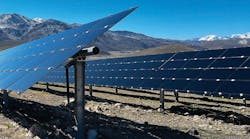Algonquin Leaders Outline Capex Plans Through 2027
Algonquin Power & Utilities Corp. will invest about $1.4 billion in the company’s electric utilities through the end of 2027, the company’s new leadership team told investors and analysts June 3.
The investment plans are part of a broader plan by new CEO Rod West to improve Algonquin’s operations and results on the heels of its sale early this year of its renewables assets, which generated more than $2 billion. West, who joined Algonquin in March from Entergy Corp., is aiming to grow the company’s rate base to about $9.1 billion by the end of 2027 from a little less than $8 billion in 2024.
Electric utilities such as Empire Electric in the Midwest and New Hampshire Electric accounted for 58% of that year-end 2024 rate base and are in line to get roughly that share of the nearly $2.5 billion Algonquin will spend between now and the beginning of 2028. (Algonquin, which is based in the Toronto area, also owns a set of natural gas and water utilities in several states and has more than 1 million customers in total.)
West and his team expect Algonquin’s total capex will grow from about $630 million this year—which is down about $130 million from what the company invested in its regulated businesses last year—to $785 million in 2026 and about $1.04 billion in 2027. The company’s electric operations will receive about 57% of that cash.
“Here’s where pace and scale matters most,” West said about cost-cutting efforts in the wake of the sale of Algonquin’s renewables group.
Among the projects underway and planned are changes in procurement processes that include consolidating some of Algonquin’s vendor relationships, which have historically been given more independence at the operating utility level. Other areas of focus include trimming costs in the company’s technology and corporate groups, moves West and Chin said have shown “promising” early results.
Investors were pleased with the tone and the numbers in the update from West: Shares of Algonquin (Ticker: AQN) popped nearly 16% to $6.22 on June 3. That’s their highest level since last August and means they have now climbed nearly 30% over the past six months, growing the company’s market capitalization to about $4.8 billion.
About the Author
Geert De Lombaerde
Senior Editor
A native of Belgium, Geert De Lombaerde has more than two decades of business journalism experience and writes about markets and economic trends for Endeavor Business Media publications T&D World, Healthcare Innovation, IndustryWeek, FleetOwner and Oil & Gas Journal. With a degree in journalism from the University of Missouri, he began his reporting career at the Business Courier in Cincinnati and later was managing editor and editor of the Nashville Business Journal. Most recently, he oversaw the online and print products of the Nashville Post and reported primarily on Middle Tennessee’s finance sector as well as many of its publicly traded companies.


